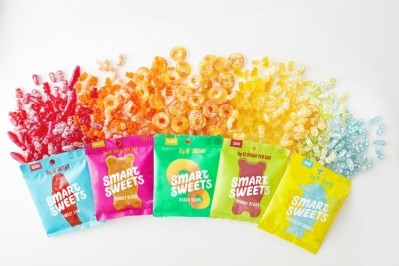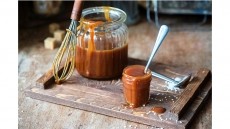sugar reduction
Tate & Lyle's new allulose, an important ingredient in cutting calories and sugar in chocolate and candy

Tate & Lyle shared a low-cal, low-sugar chocolate chip cookie at the International Baking Industry Exposition in Las Vegas, September 8-11 – a show ripe with sweets and treats, and this year a craft bent. This particular cookie dough contained 50% less sugar than its average counterpart, countered by a 25% sugar hike when including standard chocolate morsels.
“It kind of begs the question, could you push that down a little bit further by adapting the chocolate, so that it actually helps the finished product attain a higher sugar calorie reduction?” asked customer marketing manager, Allison Feriozzi.
She told us that ‘several’ confectionery players, ‘large to small,’ have begun exploring the ingredient and its textural benefits compared to other sugar alcohols, “while still tackling the consumer interest in having something that’s better for you.”
Reformulating chocolate definitely requires some tweaking – more fat, for instance – as does non-chocolate confectionery, such as adjusting the gelatin level in a gummy, explained Susan Butler, a technical category manager for nutrition, bakery and confectionery at Tate & Lyle.
Allulose Primer
Allulose is a rare sugar naturally found in fruits such as jackfruit and raisins. Tate & Lyle developed it through an enzymatic corn conversion, with the US Food and Drug Administration recognizing it as safe (GRAS) in 2015.
The ingredient was thrust into the spotlight in April, when the FDA announced that – due to its nearly non-caloric and non-cariogenic characteristics – manufacturers did not have to label allulose as sugar on the nutrition panel. It is absorbed by the body but not metabolized, explained Butler.
Chemically, allulose is a sugar but it omits the ‘negative health benefits’ latched to the real stuff, she added.
Dolcia Prima (the company’s brand name for allulose) carries 0.4 calories per gram. Sugar packs 4 calories per gram.
Allulose 'changes the world of carbohydrates’
Tate & Lyle expects allulose to play an important role in cutting not just calories but also sugar in in chocolate, gummies, bread and other sweet baked goods.
“It changes the world of carbohydrates,” said Butler. With so much discussion around cutting carbs and upping fiber, this non-caloric option offers manufacturers another useful means to overcome that challenge.
“We like to look at them all as parts of a toolbox. As that toolbox grows, you get more and more ways that you can further reduce sugars, further reduce calories,” continued Butler. Currently, in chocolate, allulose can only comprise 25% of the final product’s weight by volume, so combining it with other sweeteners and ingredients remains essential. “You get the same texture, taste, indulgence that people are looking for without all the calories.”
Removing sugar from chocolate, candy or baked goods has always been a challenge because “you can physically see the differences,” said Feriozzi. The ‘temporal profile’ of allulose so closely resembles sugar that it makes reformulating to cut sugar levels ‘simpler.’
“It’s a great transitional ingredient into innovating a little bit differently within the sweetener space,” she added. “Stevia is not going to add back the bulk or the mouthfeel in a product, [but] allulose can do that. It might not be as sweet. It’s like a hammer instead of a screwdriver: You’re going to need both for your project, but you might need one more than the others.”
Marketing allulose to your average consumer
Pressed on how Tate & Lyle wants the public to understand this new ingredient, Feriozzi said, “We really look for opportunities with our customers where we can help [elevate] that consumer education. We know that if someone is paying attention to the label and they see allulose, they may not know what it is.”
The company is readily working with producers “to provide the right messaging,” but ultimately it is up to the discretion of the brand. Feriozzi posits that some might “take more of a stealth approach and not market that it’s lower in sugar and calories.” Because most candies post calorie counts on front of pack, consumers might notice the change, even if the brand skips the flashy call-out.
Paying attention to consumer perception is paramount, she continued, as information – whether rooted in science or opinion – runs rampant in today’s digital world. Tate & Lyle regularly works with healthcare professionals, especially those specializing in diabetes, to ensure all parties have the most accurate and up-to-date information, according to Feriozzi.
Terms on labels can be tricky, added Butler, as evidenced by another of Tate & Lyle's ingredients, polydextrose, also derived from corn. (Consumers prefer the term ‘soluble fiber.’)
Alternative sweeteners such as stevia or erythritol lack the textural capabilities than allulose, she said. “In general, the biggest difference is: it is a sugar…so it has much closer functionality [and] taste to sugar. With polyols [sugar alcohols], you have to add a lot of sweeteners back – they have some sweetness…but it’s different. They tend to have cooling effects. With allulose, you don’t have that: it tastes like sugar because it is sugar."













